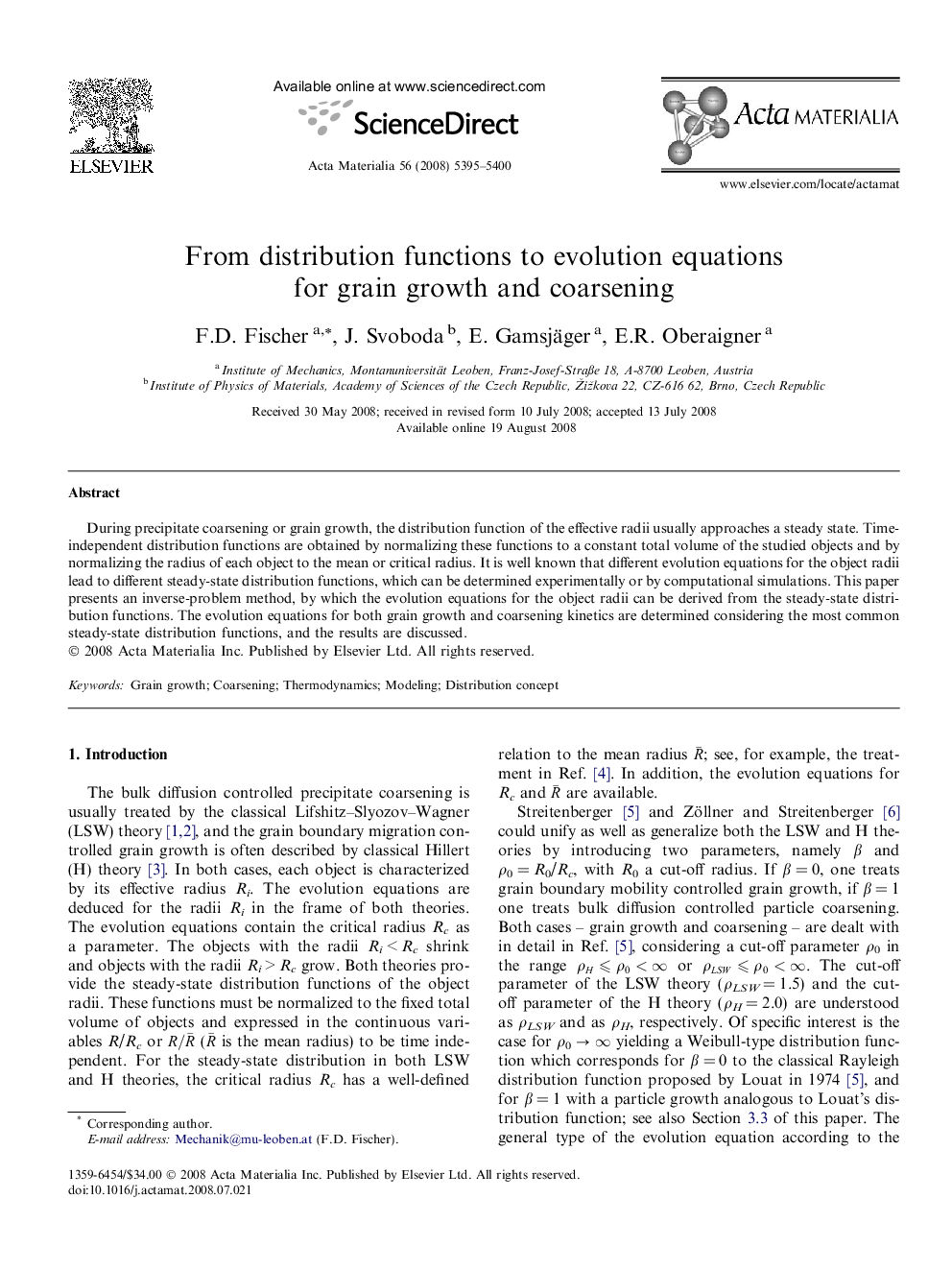| Article ID | Journal | Published Year | Pages | File Type |
|---|---|---|---|---|
| 1449798 | Acta Materialia | 2008 | 6 Pages |
During precipitate coarsening or grain growth, the distribution function of the effective radii usually approaches a steady state. Time-independent distribution functions are obtained by normalizing these functions to a constant total volume of the studied objects and by normalizing the radius of each object to the mean or critical radius. It is well known that different evolution equations for the object radii lead to different steady-state distribution functions, which can be determined experimentally or by computational simulations. This paper presents an inverse-problem method, by which the evolution equations for the object radii can be derived from the steady-state distribution functions. The evolution equations for both grain growth and coarsening kinetics are determined considering the most common steady-state distribution functions, and the results are discussed.
